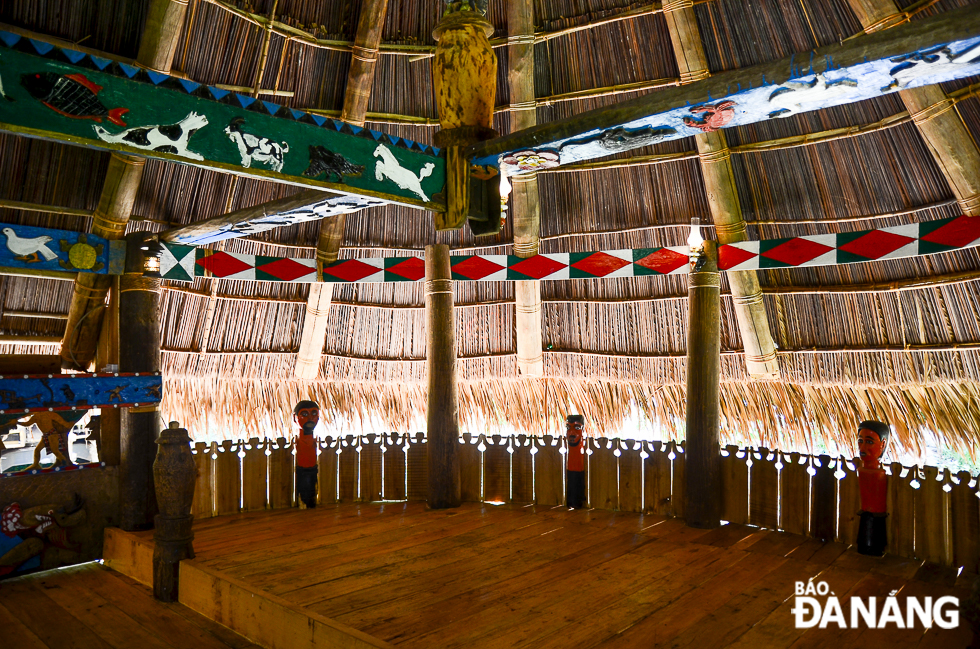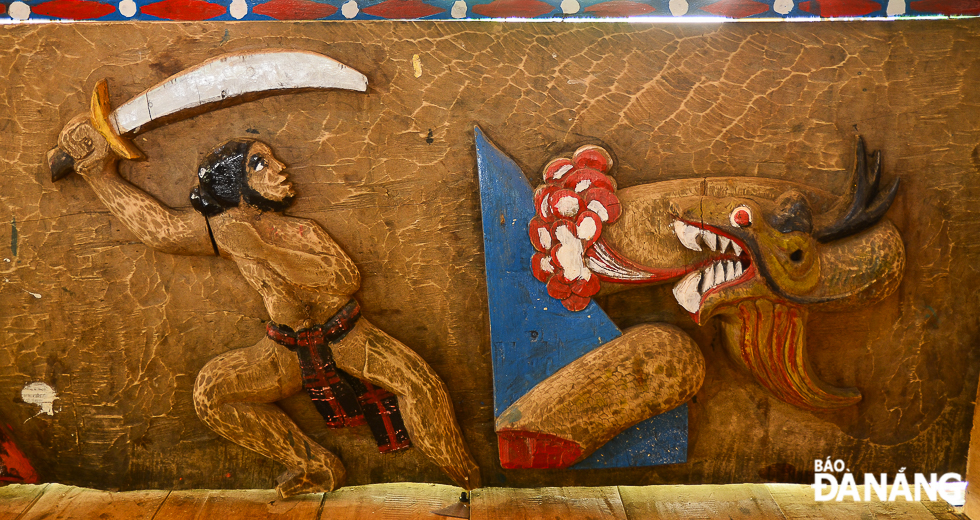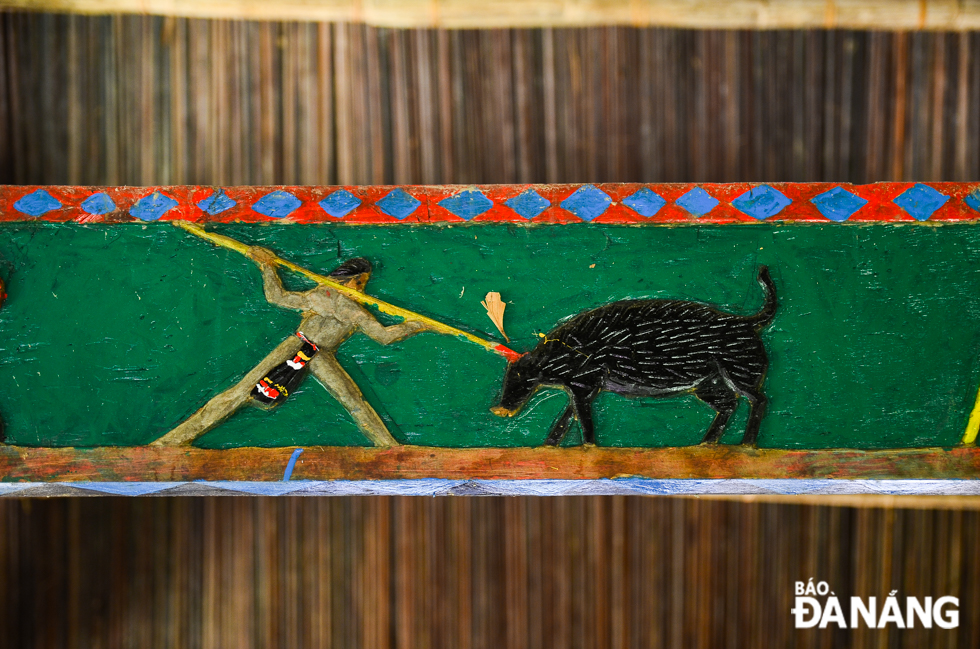The Guol house is a spiritual and cultural symbol of the Co Tu ethnic minority group. It is considered a sacred place inhabited by the gods and the ancestors.
The house is usually built in the centre of the settlement area, thus confirming its important role in the social and spiritual life of the village. It is always the biggest, tallest and most beautiful house in the village.
Traditionally, a Guol house has a principal pillar in the middle and 8 surrounding smaller pillars. The roof is made of a special kind of leave called corypha saribus and has the shape of a mango.
Images about the daily activities and symbols of the Co Tu ethnic minority group, such as buffaloes, birds and dancing girls, are carved inside the house.
Let’s take a look at amazing photos captured by our reporter Xuan Son, depicting carved images inside the Guol house, which provide us with a vivid insight into daily life and customs of Co Tu people.
 |
| The Guol house is a place for members of the village council (Tacooh puol) to discuss and decide important issues of the village. It is also a place where traditional village festivals are held. Included are ceremonies to celebrate new rice and a bumper crop, and a brotherhood ceremony. The roof of the Guol house features images of a chicken, a spear and the moon, which represents the tradition of the Co Tu ethnic minority group in calculating days based on the monthly cycles of the Moon's phases. |
 |
| The Guol house is built from such locally-available materials as bamboo, rattan, thatch, and leaves. |
 |
| Vividly carved images inside a traditional Guol house |
 |
| The image of buffalo is closely linked to the agricultural life of the Co Tu ethnic minority group |
 |
| A carved image of a Co Tu warrior fighting against a sea monster |
 |
| An image of the ‘tung tung da da’ dance |
 |
| All carved images inside the Guol house depicting daily life of the Co Tu ethnic minority group, including … |
 |
| … the hunting activities. |
 |
| The wooden statue of Tring bird in the Goul house. The bird is considered as the ambassador of the Rice God who helps the Co Tu people to find new land to cultivate and build a village. |
 |
| The wooden statue of a forest ghost outside the Guol house with a fierce face in order to drive away evil spirits out of the village. |
By XUAN SON - Translated by MAI DUNG
.









